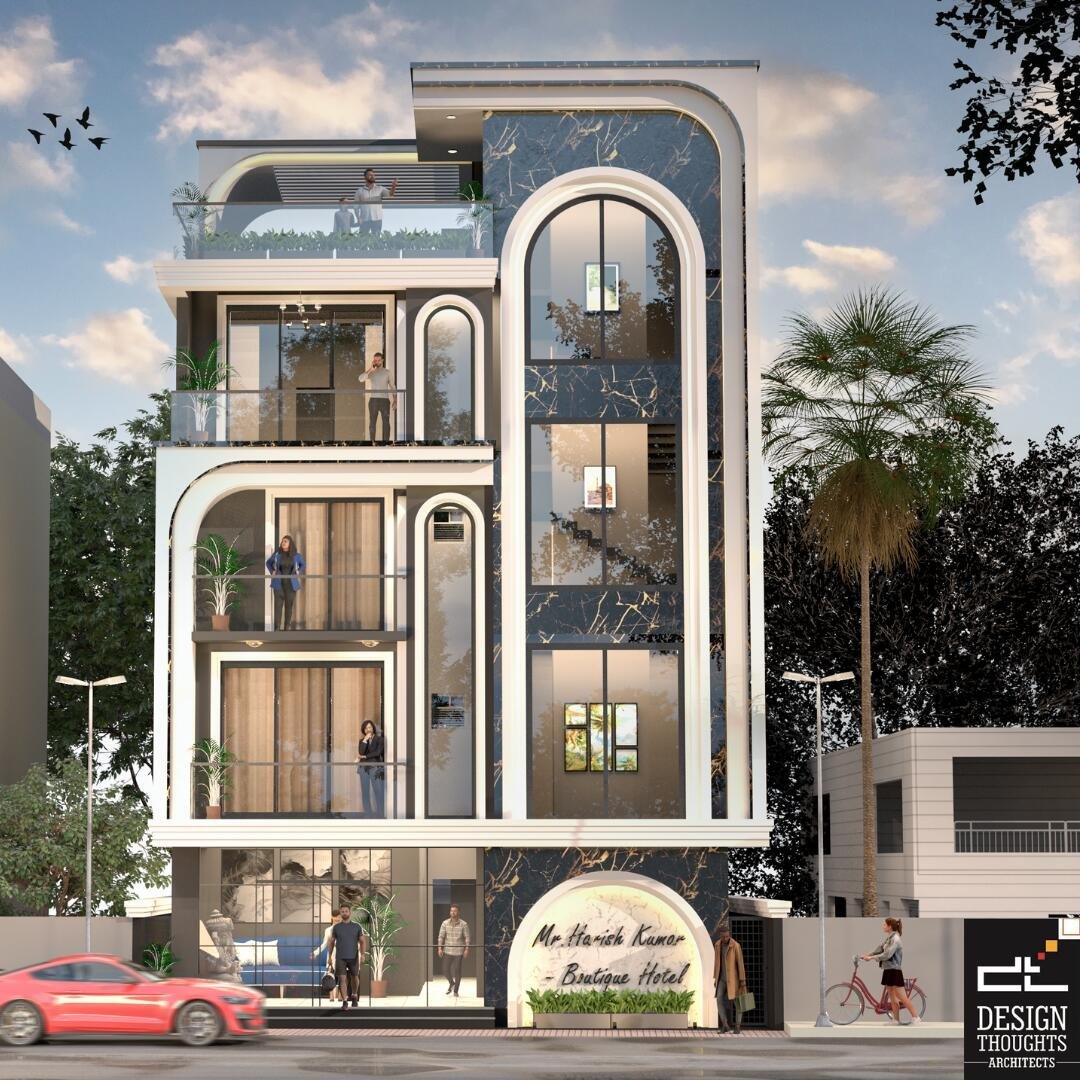Discover the Ingenious Providers Provided by Commercial Architects for Your Following Task
Commercial architects play a necessary function fit the built atmosphere. They mix functionality with visual allure, creating areas that reverberate with brand identification. These specialists employ ingenious style options, lasting techniques, and advanced innovations to improve individual experiences. Their joint method guarantees alignment with customer visions and functional demands. The extent of their services typically prolongs past design. The following steps in comprehending exactly how these architects navigate complex project demands might shock you.
Recognizing the Function of Commercial Architects
Although the function of business architects might vary depending on the details task, their key feature focuses on creating practical and visually attractive areas for companies. These experts are charged with understanding the special requirements of each client, whether it be a store, office complex, or commercial facility. They conduct extensive site evaluations and work together with stakeholders to guarantee that the layout lines up with the company objectives and brand name identity.Commercial architects also browse different regulatory needs, securing conformity with zoning legislations and building codes. Their expertise encompasses developing sustainable styles that advertise energy performance and environmental responsibility. Additionally, they take care of the task's timeline and budget, coordinating with professionals and engineers throughout the construction procedure. By blending imagination with technological understanding, industrial architects play a vital duty in transforming theoretical concepts into concrete facts, ultimately improving the functionality and allure of commercial areas.
Cutting-edge Design Solutions for Special Rooms
As commercial spaces significantly demand diversity to attract attention in affordable markets, ingenious design remedies have actually come to be crucial for architects. These professionals take advantage of their creativity and technical proficiency to craft special settings that mirror brand identity and enhance customer experience. By incorporating sophisticated technology and materials, industrial architects can transform average rooms into captivating locations that engage customers and influence employees.Architects employ different methods, such as flexible reuse, which renews existing structures while preserving their historical relevance. They additionally explore non-traditional layouts and multifunctional spaces that provide to diverse demands, making sure adaptability for future growth.Furthermore, the unification of biophilic layout-- bringing nature inside-- produces inviting ambiences that advertise health - commercial architects. This attention to information in cutting-edge style not just addresses aesthetic problems but likewise cultivates area and collaboration. Ultimately, these tailored services allow companies to prosper in an ever-evolving landscape, establishing them besides rivals
Lasting Architecture Practices
Lasting style methods have arised as an essential focus for commercial architects looking for to produce impactful designs that resonate with environmental stewardship. These methods prioritize using renewable energies, power efficiency, and marginal waste, mirroring a commitment to decreasing the eco-friendly impact of structures. Architects integrate products that are sustainably sourced or reused, making sure that building and construction methods align with ecological principles.Furthermore, the integration of eco-friendly roof coverings and walls boosts biodiversity while boosting power performance. Reliable water management systems, such as rain harvesting, add to sustainability by preserving water sources. All-natural air flow and daylighting strategies are additionally employed to enhance interior atmospheres, lowering reliance on artificial home heating and lighting.
Integrating Innovation in Architectural Styles
An increasing number of business architects are embracing modern technology as a transformative element in building design. By leveraging sophisticated software program tools such as Building Info Modeling (BIM), architects can develop comprehensive 3D depictions of projects, permitting improved visualization and cooperation among stakeholders. This modern technology assists in real-time changes, decreasing errors and streamlining the style process.Additionally, architects are integrating wise structure modern technologies right into their layouts, which enhance energy efficiency and resident comfort. Functions such as automated illumination, climate control, and safety systems can be flawlessly included, advertising lasting techniques and lowering functional costs.The usage of digital and increased this content fact additionally permits customers to experience designs before building and construction starts, giving important insights right into spatial partnerships and visual selections. Ultimately, the assimilation of modern technology in building designs not just promotes advancement but also assures that jobs are performed with precision and straightened with contemporary demands.

Task Administration and Coordination Providers
Efficient project management and control services are essential for the effective execution of commercial building projects. These services ensure that all facets of a project, from preliminary layout to final building, are flawlessly integrated. Commercial architects play a considerable duty in coordinating between different stakeholders, consisting of clients, professionals, and distributors, to maintain clear communication and positioning on project goals.By executing organized methodologies, architects can take care of timelines, budgets, and sources properly, reducing hold-ups and price overruns. They use task management software application and devices to track progression, take care of documentation, and promote collaboration among team members.Additionally, these solutions consist of threat assessment and mitigation approaches, confirming prospective obstacles are identified and resolved proactively. The result is a streamlined procedure that improves overall job effectiveness and high quality, eventually causing an effective result that satisfies the client's vision and expectations.
Regulatory Conformity and Zoning Aid
Reliable regulative conformity and zoning assistance are necessary for the success of any type of industrial project. Architects must possess a deep understanding of neighborhood policies and zoning legislations to guide customers via visit the complexities of the approval procedure. This knowledge not only assures adherence to lawful demands but also aids maximize job design and capability.
Browsing Local Regulations
Just how can industrial architects guarantee their styles align with neighborhood laws? By remaining educated about the ever-evolving landscape of building ordinance and regional ordinances, architects play a vital function in guaranteeing conformity. They carry out detailed research study to understand the certain policies controling products, security standards, and building techniques relevant to each job. Collaborating very closely with neighborhood authorities, commercial architects can steer through the intricacies of governing frameworks effectively. They likewise promote necessary permits and assessments, simplifying the approval procedure. This aggressive approach not only reduces prospective legal complications however additionally improves task efficiency. Ultimately, their experience in steering regional regulations encourages clients to realize their vision while sticking to all called for requirements and guidelines.
Zoning Legislation Knowledge
Zoning legislation experience is essential for commercial architects steering with the complexities of land usage laws. These architects possess thorough understanding of local zoning codes, which govern residential or commercial property growth, land use, and building specifications. By comprehending these guidelines, they help clients browse the often elaborate authorization procedures required for construction jobs. Their proficiency guarantees compliance with zoning legislations, reducing the threat of job delays or lawful complications.Additionally, industrial architects offer useful assistance in acquiring necessary permits and differences, promoting smoother communications with regional authorities. They also offer strategic suggestions to maximize website layout and take full advantage of the possibility of a property while adhering to zoning constraints. Ultimately, their zoning legislation efficiency plays a critical duty in the effective awareness of business projects.
Collective Techniques With Clients and Stakeholders
Successful commercial design depends upon the ability to promote strong partnership with customers and stakeholders throughout the design procedure - commercial architects. Architects take part in open discussions, making certain that all parties' visions and requirements are incorporated into the task. This joint method begins in the preliminary stages, where architects conduct workshops and conceptualizing sessions, allowing clients to articulate their objectives and concerns.Stakeholder input is just as essential; architects typically organize conferences with neighborhood members, regional federal governments, and other relevant entities to collect diverse viewpoints. By using visualization devices, such as 3D modeling, architects facilitate better understanding and communication.This repetitive comments procedure not just enhances layout top quality yet additionally develops count on, causing even more effective results. Ultimately, the joint approach of business architects transforms ideas into practical areas that show the aspirations of customers and the wider community, guaranteeing an unified partnership throughout the task lifecycle

Frequently Asked Inquiries
What Is the Typical Timeline for a Commercial Design Project?
The regular timeline for a commercial architecture task varies, typically spanning Homepage 6 to 18 months. Factors influencing this period include project complexity, regulative authorizations, and client responsiveness, affecting each phase from layout to building completion.
How Do Commercial Architects Fee for Their Solutions?
Commercial architects generally charge based upon job extent, intricacy, and size. Usual cost frameworks include hourly prices, repaired fees, or percentage-based costs computed from the overall building and construction cost, ensuring openness and positioning with customer assumptions.
Can Commercial Architects Assist With Inside Style?
Commercial architects can without a doubt assist with interior decoration, integrating functionality and aesthetic appeals. Their knowledge guarantees cohesive areas that line up with building vision, boosting individual experience while satisfying regulative needs and customer purposes through ingenious design solutions.
What Kinds of Customers Do Commercial Architects Normally Work With?
Commercial architects usually team up with varied clients, including services, federal government entities, universities, and charitable organizations (commercial architects). Each customer seeks customized building remedies to satisfy certain functional and aesthetic requirements for their projects and environments
Exactly How Do Commercial Architects Stay Updated With Style Patterns?
Commercial architects remain updated with style patterns via continual education and learning, attending market meetings, engaging in specialist networks, and investigating emerging technologies. They also collaborate with various other experts to gain insights into ingenious products and style techniques.
Comments on “How commercial architects Use Smart Design Principles to Improve Project Outcomes”